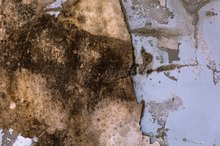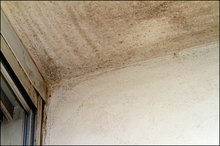Mold Related Lung Problems
If you have mold in or around your house, it can be dangerous to your health. Even if you do not have a mold allergy, some mold can be toxic and even deadly. Mold-related lung problems are the most common type of mold-related disease because mold spores can be inhaled and breathed in, especially if they are found in or around the house. If you live in an area that has mold and feel your health is suffering as a result, have it removed as soon as possible. Contact your doctor for any medical symptoms.
If you are experiencing serious medical symptoms, seek emergency treatment immediately.
Lung Fibrosis
Lung fibrosis, also known as idiopathic pulmonary fibrosis, is a lung-tissue scarring disorder that can be caused by trichoderma fungi, which grows on green mold, or mucor, which is a mold found on many plant matters and rotten vegetables. Once the lungs are scarred by lung fibrosis, the lungs permanently lose their ability to absorb oxygen. The longer the patient is exposed to the trichoderma or mucor mold, the more irreversible damage that will be caused in the lungs, and the more difficulty the patient will have breathing.
Aspergillosis
A List of Fungal Diseases
Learn More
Aspergillosis is an allergic reaction to the aspergillus fungus, which grows most commonly on compost piles, dead leaves, grain storage units and on stored grain, and on rotten vegetables and vegetation. Common symptoms of aspergillosis include coughing up blood, wheezing, blood in the urine, and shortness of breath. If you have aspergillosis, a fungus mass or ball may form in the lungs. The fungus ball does not need to be removed unless there is lung tissue bleeding, in which case the ball must be surgically removed as soon as possible. Aspergillosis is usually treated with prednisone, which can be prescribed by your doctor.
Asthma
Asthma is a breathing disorder that clogs the airways when a flare-up occurs. Triggers can occur from allergens like pet dander, pollen and mold, and they may cause the patient to have difficulty breathing. If the patient has a sensitivity or allergy to any type of mold, the mold can cause an asthma attack, which can only be remedied by inhalant medication or by leaving the area contaminated with mold. Once an asthma attack has occurred, go to the doctor for a prescription inhaler in case the flare-up occurs again.
Hypersensitivity Pneumonitis
Diseases Caused by Black Toxic Mold
Learn More
Hypersensitivity pneumonitis is an inflammation of the small airways within the lungs, usually triggered by airborne particles like mold spores, fungus and bacteria. Symptoms of hypersensitivity pneumonitis includes coughing, shortness of breath, chest pain, chills, fever, and body aches. Hypersensitivity pneumonitis are diagnosed by chest x-rays, where small nodules can be seen on the lungs. The most common cause of hypersensitivity pneumonitis is exposure to moldy bird excrement. Bird owners and people who work with birds commonly get this disease. Treatment includes staying away from the mold inhalants and anti-inflammatory medication prescribed by your doctor.
Warnings
If you experience the inability to breathe, are coughing up blood, see blood in your stool, experience severe vomiting or nausea, or feel severely fatigued and cannot get out of bed, go to the doctor or emergency room immediately. Many symptoms of mold-related lung disorders are treatable. However, if the disease is left untreated for a long time, lung scarring will occur, which is a non-reversible symptom. If you see mold in your house, call a toxin removal company to get rid of the mold immediately, especially if you are experiencing symptoms as a result of breathing in the mold.
Related Articles
Resources
Writer Bio
Megan Smith has been a freelance writer and editor since 2006. She writes about health, fitness, travel, beauty and grooming topics for various print and Internet publications. Smith earned a Bachelor of Fine Arts in writing from New York University.









